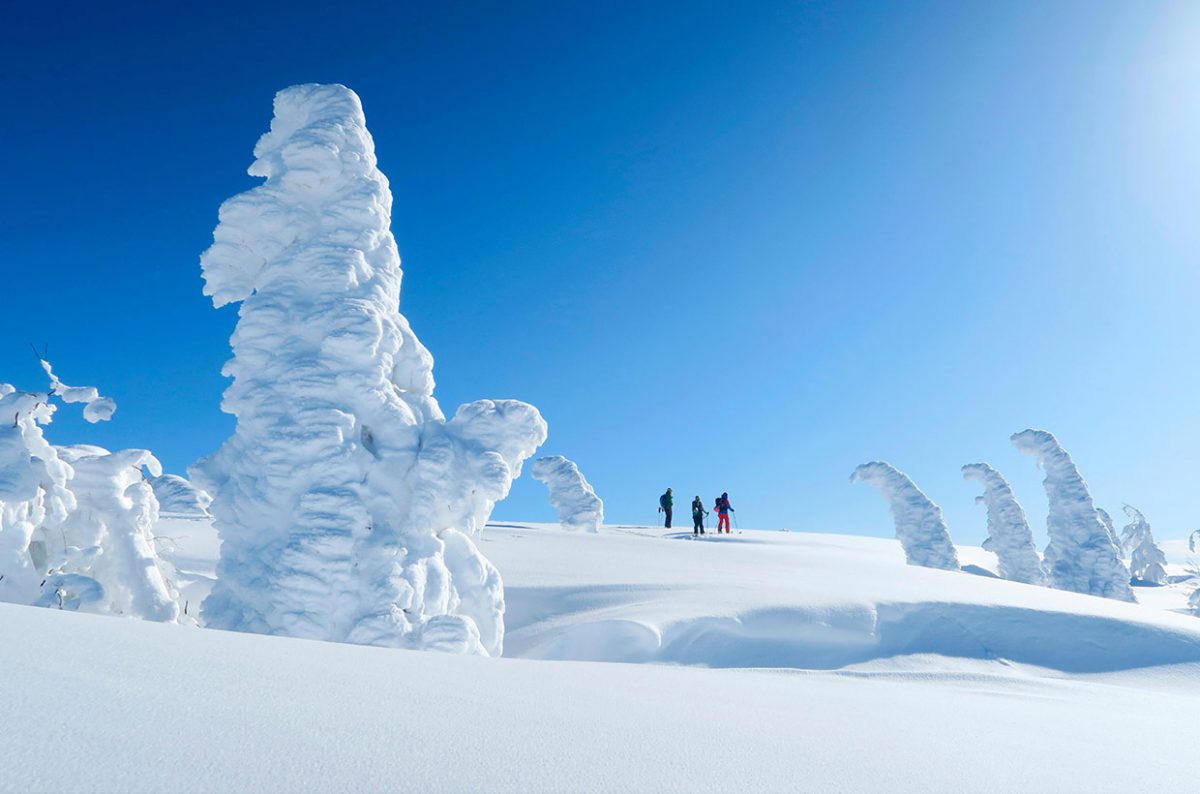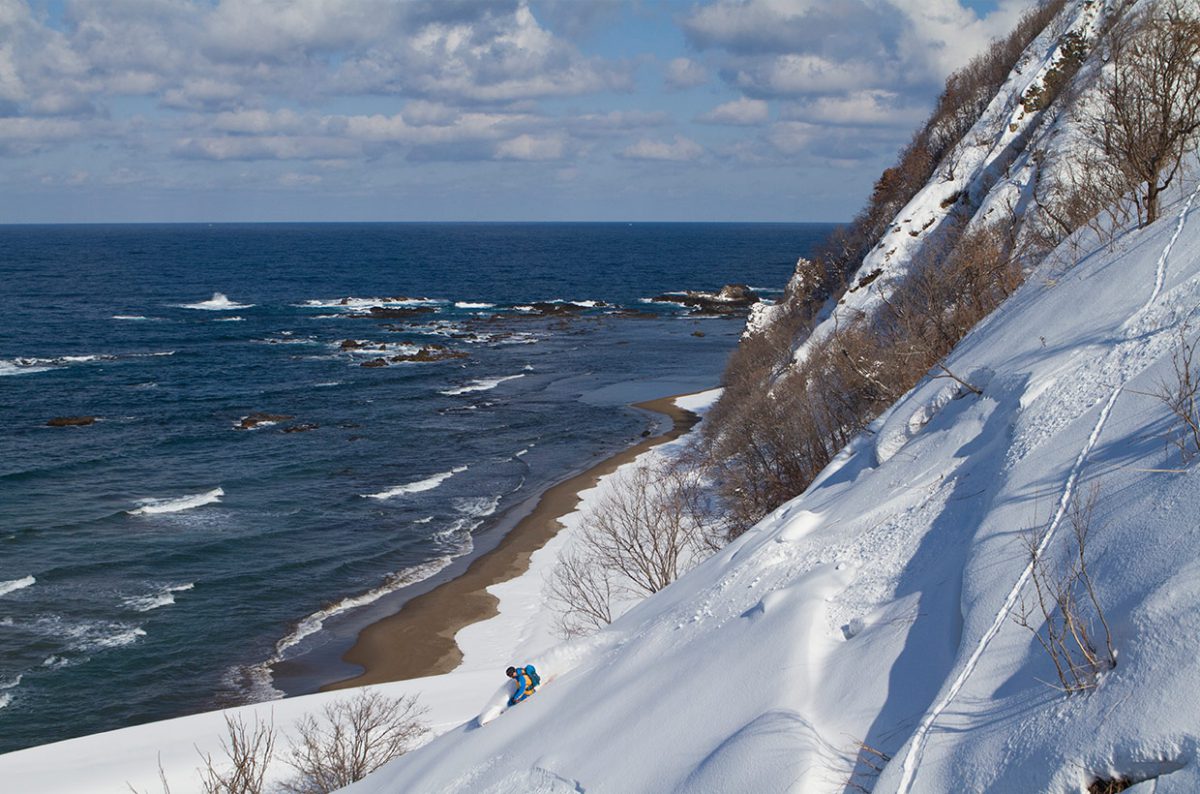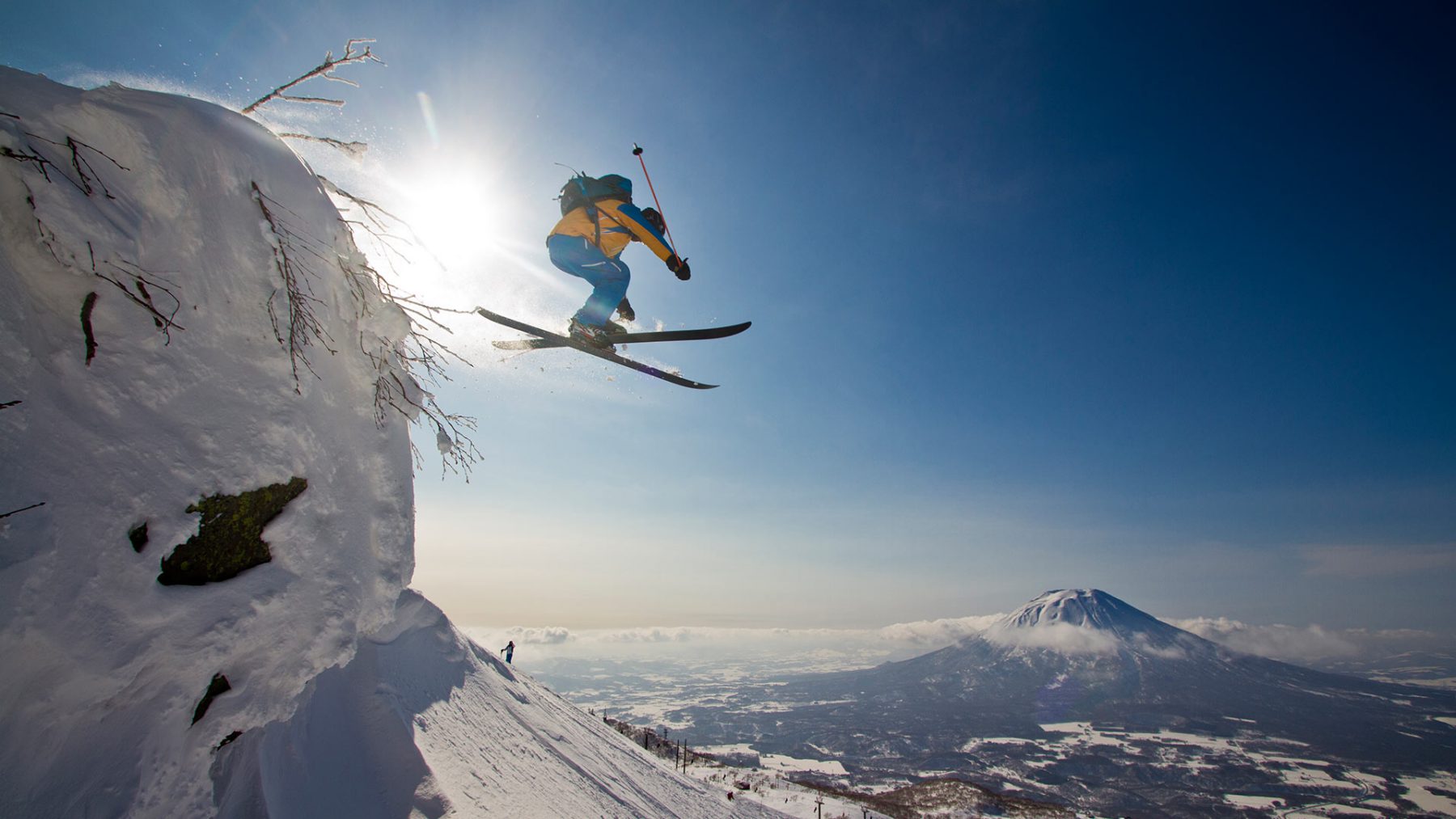Powder made in Japan by Martin Tschechne | 25th November, 2016 | Personalities
Icy winds from Siberia and humidity from the Pacific Ocean produce the finest powder snow on earth. This, combined with steep, craggy slopes of volcanic soil make Japan a paradise for skiers and snowboarders. From Hokkaido in the north to the southern tip of the country, ski runs and hot springs are always in close proximity.
Satoshi Takae does not have a lot of time, maybe just a weekend. As a junior employee in one of Tokyo’s office towers, he is fighting to get ahead. But if he finishes his work quickly and his boss does not thwart his plans, he can catch the high-speed Tohoku-Shinkansen train from Tokyo Station on a Friday night and travel to Nasushiobara, 150 kilometers north of the capital, where a shuttle bus takes him to his hotel in roughly an hour. Sleep overpowers him as soon as he arrives, but when he wakes up the next morning, he looks out to see the sun rising above the wintry landscape of the Hunter Mountain Resort. It is the start of a mini-vacation, a two-day escape from everyday life that he spends hurtling down a steep slope on a snowboard and feeling the exhilarating headwinds. Takae-san approaches the short line at the ski lift with serenity. For a person who commutes in the 37-million strong metropolis every day – between the crowded dwellings of the Kamata neighborhood and the glass skyscrapers of Shinjuku – the ski resort located at over 1,600 meters is the perfect sanctuary. There is a carefully designed selection of runs – from family-friendly to seriously ambitious – half-pipes with great music playing and boldly laid-out mogul slopes. At night, visitors can choose from a selection of established and well-run restaurants and nightclubs. “Gaijin” – those of us who are unable to read or speak Japanese – will find signposts and menu suggestions in English. Fans of Japanese tradition can book a stay in a ryoka inn and enjoy an evening at an onsen or hot spring, of which there are many in Japan. At night, instead of using a bed, you can unroll your futon on a tatami mat and sleep in the traditional Japanese style.
On his independent “Snow Japan” Internet platform, Kenichi Nakajo collects ratings and information on Japan’s ski resorts, from the northern island of Hokkaido to Aomori, Niigata and Nagano, and down to the Kenritsu Mominoki Forest Park in Hiroshima prefecture. He explains the three major differences between Japanese ski resorts and those in the Alps or in the Rocky Mountains. First, there is the length of stay. “Most guests only come here for one or two days of skiing.” So there is no time for folksy chalet activities, everything has to dovetail precisely: streamlined ski classes, reliable childcare, meticulous customer service and guaranteed fun. Even the alternative to stressful everyday life is run on a tight schedule in Japan. Cross-country skiing connoisseurs can also go ski touring but snowboarding and downhill skiing are just… well, more awesome. Consequently, vacationers here tend to be young. The second difference is that there are more than 600 ski resorts in Japan, all the way down to the south of the island nation to Saga prefecture on Kyushu Island and Ehime on Shikoku Island. These are located roughly on the same latitude as Baghdad or Casablanca, but have guaranteed snow. Nakajo-san dryly describes the topography of his home country thus: “In Japan there is no shortage of mountains.” Nowhere in Japan do people live very far from a ski resort where a network of ski lifts transports them to one of the countless steep slopes in the rugged, volcanic landscape. Or, to one of the less challenging nursery slopes at the foot of the mountains.
During the economic boom there were far more resorts, as many as 700, but when the economy stalled, many operators were forced to close down. The arrival of snowboarding changed everything. Why? Because the third and most important difference between Western and Japanese resorts is the bone-dry powder snow that is reliably and generously dispersed across the mountains. Hokkaido Island is a genuine paradise for powder hounds. Hokkaido comprises the region around Sapporo, which hosted the Olympic winter games in 1972, the ski resort of Niseko United with its 29 lifts and 55 kilometers of ski runs, and Yoichi and Otaru on the east coast, where cold air flows in from Siberia, bringing with it humidity from the ocean. Nagano on the main island of Honshu hosted the 1998 games. Connoisseurs consider Nozawa Onsen, situated 46 kilometers north of the city, to be among one of the best ski resorts in the world. Visitors have long come from further afield than Japan: China, the Pacific region, Europe and the U.S. Those who would like to indulge in a particular treat have themselves pulled up into the unspoiled, white silence by a caterpillar tractor or a helicopter. Face downhill, breathe in deeply and off you go on the run of a lifetime!
Satoshi Takae, the young man from Tokyo, has been exerting himself on the slopes all day. He has ridden to the top and sped downhill as many times as his ski pass would allow him. Now, surrounded by glittering frost, he floats in the comfortable hot waters of an onsen and looks up into the clear, starry night skies. For a few seconds, he holds his breath. That is what eternity must feel like. On Monday, he will be back, forging ahead on his career path, but the hustle and bustle of the big city will not cause him undue stress. At home, in his tiny apartment, his snowboard hangs on the wall like a trophy. The season has only just begun, and in Japan, happily, the mountains are never far away.






